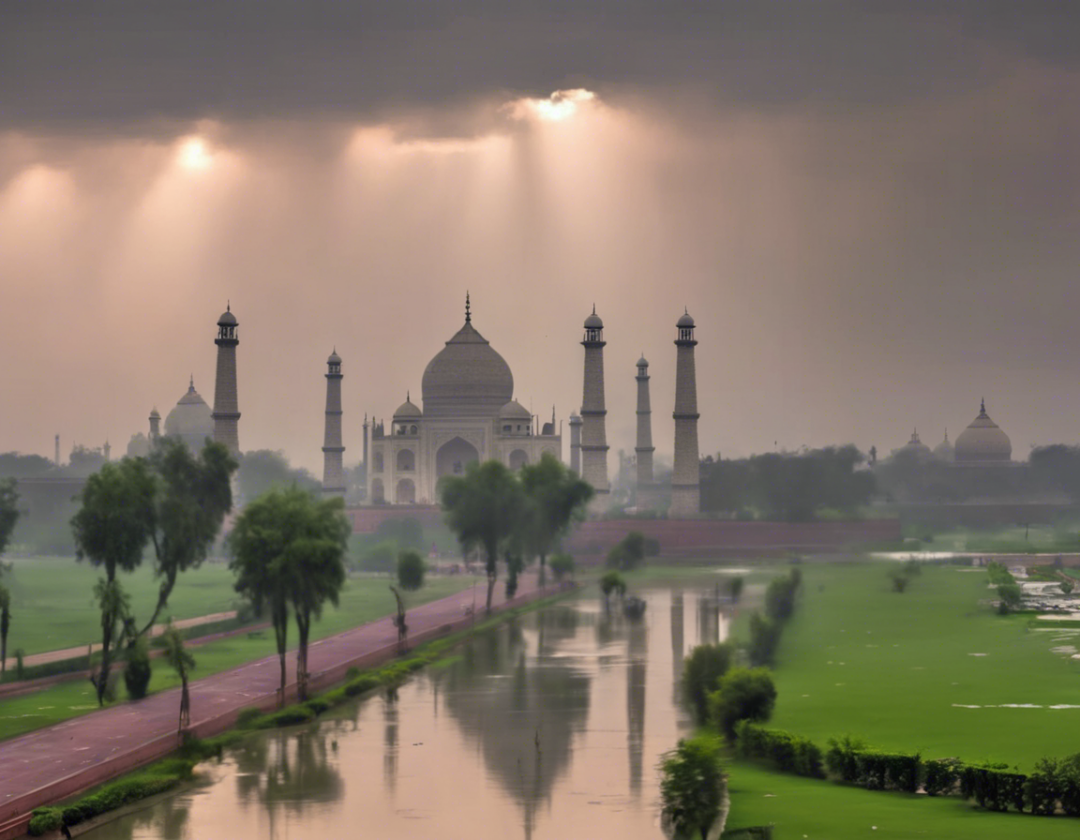When planning a trip to Agra, one of the most important factors to consider is the weather. Agra, a city located in the northern state of Uttar Pradesh in India, experiences a subtropical climate with distinct seasonal variations. Understanding the weather patterns in Agra can help travelers better prepare for their visit to this historically and culturally rich city, most famous for the iconic Taj Mahal.
Understanding Agra’s Climate
Agra experiences three main seasons: summer, monsoon, and winter. Each season brings its own unique set of weather conditions, which can significantly impact your travel experience.
Summer (March to June)
The summer season in Agra is characterized by hot and dry weather. Temperatures during this period can soar to extreme levels, often exceeding 40 degrees Celsius (104 degrees Fahrenheit). The scorching heat can make outdoor activities uncomfortable, especially during the peak summer months of May and June. It is important to stay hydrated and protect yourself from the sun if visiting Agra during this time.
Monsoon (July to September)
The monsoon season in Agra brings relief from the summer heat but also ushers in heavy rainfall. The city receives a significant amount of its annual precipitation during these months, which can lead to humidity and waterlogging in certain areas. Travelers should be prepared for occasional rain showers and plan their activities accordingly.
Winter (October to February)
Winter is arguably the best time to visit Agra, as the weather during this season is pleasant and mild. Daytime temperatures range from 20 to 25 degrees Celsius (68 to 77 degrees Fahrenheit), making it ideal for exploring the city’s various attractions. However, the nights can get chilly, with temperatures dropping to around 5 degrees Celsius (41 degrees Fahrenheit). Travelers are advised to carry warm clothing for the evenings.
Best Time to Visit Agra
The ideal time to visit Agra is during the winter months, from October to February. The weather is comfortably cool, making it suitable for sightseeing and outdoor activities. This period also coincides with the peak tourist season, so it is advisable to book accommodations and tickets to popular attractions in advance.
Packing Tips for Agra
When preparing for your trip to Agra, consider packing the following essentials to ensure a comfortable experience:
- Lightweight and breathable clothing for the summer months
- Sunscreen, sunglasses, and a hat to protect against the sun
- Umbrella or raincoat for the monsoon season
- Warm layers and a jacket for the winter season
- Comfortable walking shoes for exploring the city’s monuments
Frequently Asked Questions (FAQs)
Q1: Is it safe to visit Agra during the summer months?
A1: While Agra can be quite hot during the summer, it is safe to visit as long as you take precautions such as staying hydrated and avoiding the midday sun.
Q2: Does it rain a lot in Agra during the monsoon season?
A2: Agra does receive a significant amount of rainfall during the monsoon season, so it is advisable to be prepared for occasional rain showers.
Q3: What is the best time of day to visit the Taj Mahal?
A3: The early morning hours are recommended for visiting the Taj Mahal to avoid the crowds and the intense midday heat.
Q4: Can I see the Taj Mahal in the winter months?
A4: Yes, the winter months are an excellent time to visit the Taj Mahal due to the pleasant weather conditions.
Q5: Are there any indoor attractions in Agra to visit during extreme weather conditions?
A5: Yes, Agra is home to several indoor attractions such as Agra Fort and Fatehpur Sikri, which can be visited during inclement weather.
Conclusion
Understanding the weather patterns in Agra is crucial for planning a successful and enjoyable trip to this historic city. By considering the seasonal variations and packing accordingly, travelers can make the most of their visit to Agra and experience its rich cultural heritage in comfort. Whether you choose to visit during the summer, monsoon, or winter months, Agra has something to offer every traveler year-round.

